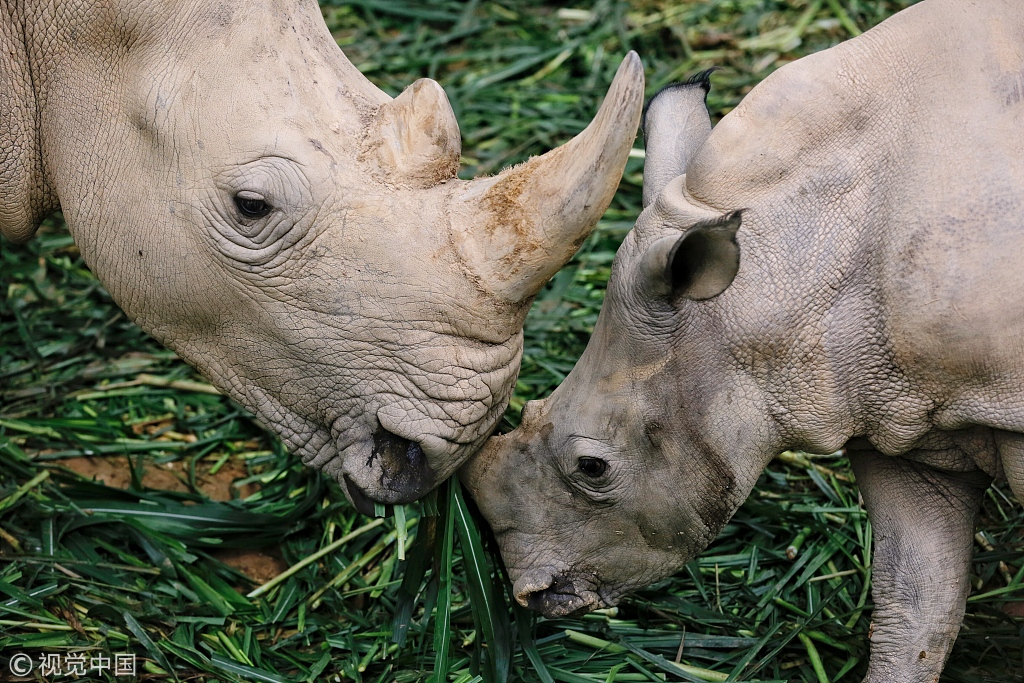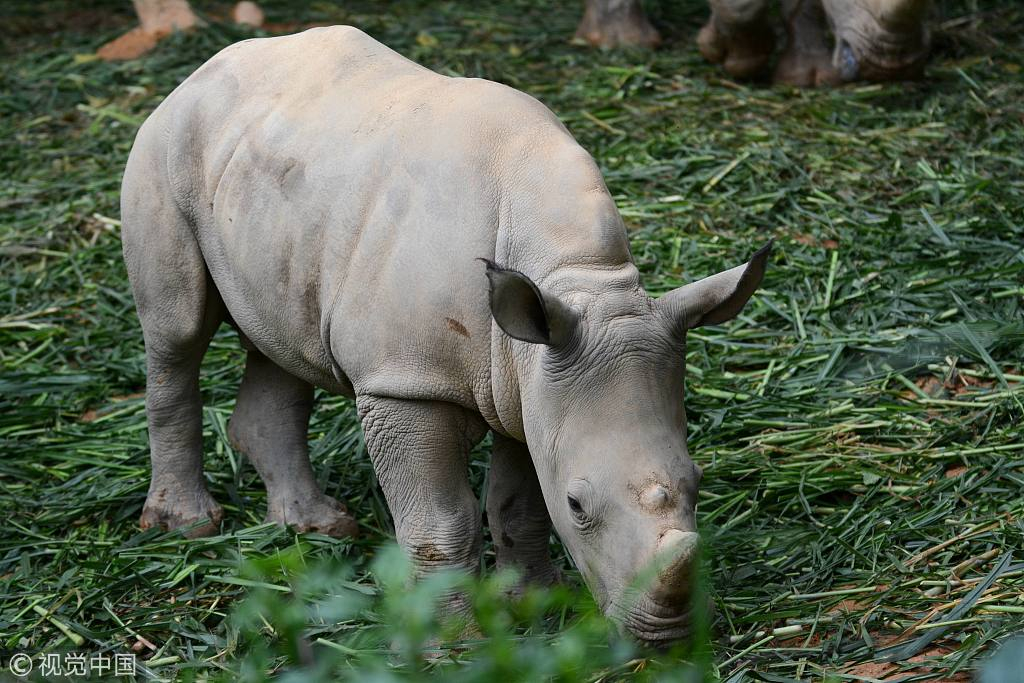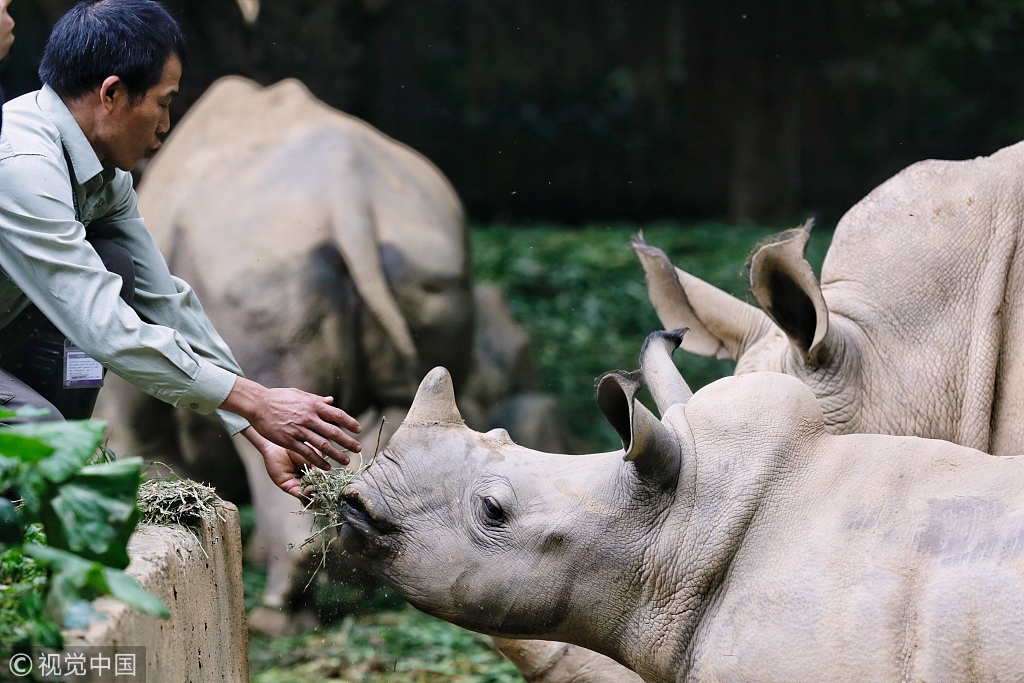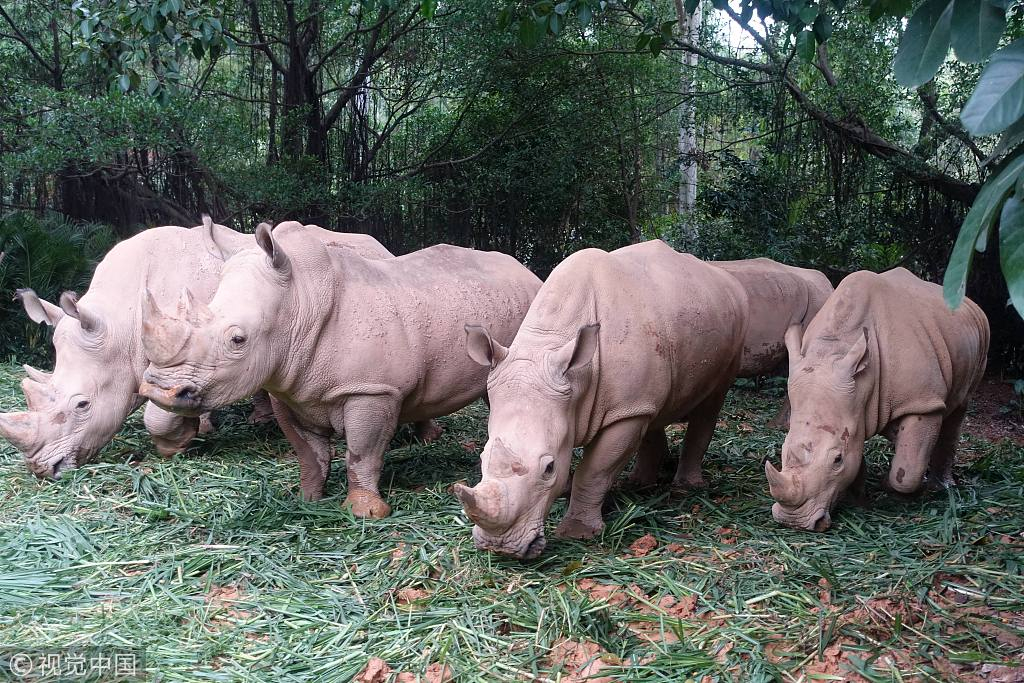

Chimelong Safari Park in Guangzhou, south China's Guangdong Province announced that it had successfully bred the first second-generation white rhino in China, China News reported. /VCG Photo

The newborn, a southern white rhino born last June, first met tourists on Thursday and was seen blending well into its group. Its father was born in 2009 and is the first southern white rhino born in the park. /VCG Photo

The white rhino is on IUCN red list of threatened species. It is the second largest land mammal after the elephant and has split into two subspecies – the northern white rhinos and the southern white rhinos, living in the north and south of Africa. /VCG Photo

While both subspecies are in need of protection, the northern white rhinos are much rarer. The world's last known male northern white rhino died last year. /VCG Photo

The park has now bred four southern white rhinos and eight black rhinos. The success of breeding a second-generation is a breakthrough for protecting the species. /VCG Photo

Copyright © 2018 CGTN. Beijing ICP prepared NO.16065310-3
Copyright © 2018 CGTN. Beijing ICP prepared NO.16065310-3